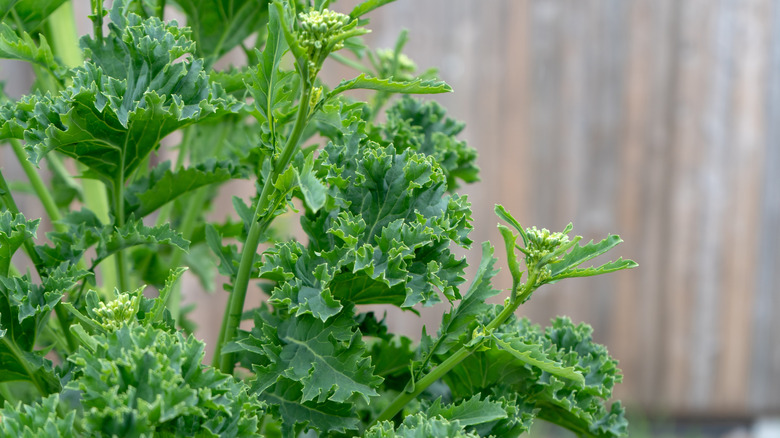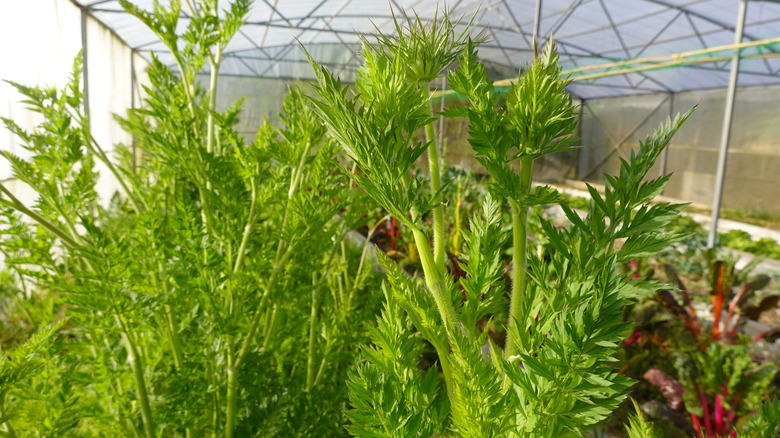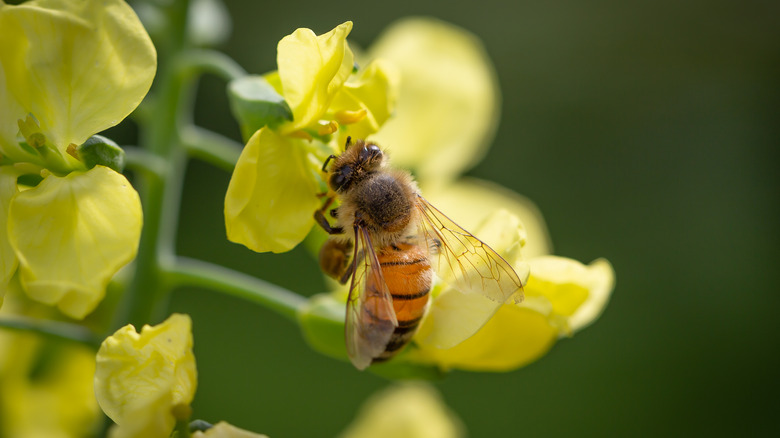Here's Why You Should Let Some Of Your Biennial Veggies Bolt This Spring
While many of the vegetables you're likely to grow in your garden will be annuals, that is they will complete their life cycle in just one season, there are a few different varieties that can be considered as biennials. This means you'll be harvesting them in their first season but they won't produce flowers and seed heads until the following spring. The production of blooms and seeds in vegetables not grown for their fruits is commonly referred to as bolting.
This can be a bit of a nuisance for gardeners who grow lettuce through the warmer months because bolting ruins the flavor of the leaves, although there are some things you can do to prevent your lettuce from bolting too soon. But for biennial vegetables, it's beneficial to leave them in the ground and let them bolt. The blooms will attract pollinators and you can collect the seeds for your next crop. Plus, you'll find that many of the flowers are also edible.
For some expert insights, House Digest's garden editor and in-house master gardener, Tiffany Selvey, spoke exclusively to House Digest. "In plant terms, biennial means it takes them two years to fully complete their growing cycle, but that doesn't necessarily mean two calendar years," she said. "Generally, when it comes to vegetables, biennial really means two growing seasons. This can happen in less than a year when you plant something in the fall and it completes its growth cycle in the spring."
Some common biennial vegetables that you can let go to seed
Some common biennial vegetables include kale, cabbage, broccoli, cauliflower, Brussels sprouts, celery, leeks, and root crops like turnips, parsnips, swedes, and beets. While these will produce what you would normally harvest in their first season of growth, they won't complete their entire life cycle, from seed to seed, until they've been in the ground through winter. This means they'll start to bolt once the weather warms up again in spring.
To explain how you can encourage these plants to complete their growth cycle, Tiffany Selvey exclusively told House Digest, "For a biennial to live this long, it can go dormant, but it won't survive extreme temperatures. To encourage your biennial vegetables to bolt — produce stalks and bloom — you may not need to do anything if you live in an area with mild winters. If a major cold front comes through, you may be able to keep them alive using frost cloth or low-tunnels." In fact, using polytunnels or frost cloth is a great way to protect your vegetable garden from freezing temperatures.
How bolting biennial veggies can benefit your garden
When your biennial vegetables bolt, the parts that you normally harvest, like the leaves, will become quite bitter and unpalatable. At this stage, your first response would be to remove them from your garden, but there are some major advantages to letting them produce their flowers and seeds. According to Tiffany Selvey, who spoke exclusively to House Digest, "If you can keep them alive through the winter, letting them bloom in the spring offers several benefits. They provide early nectar for all kinds of native bees and other pollinators. These blooms are also edible, so they can make a pretty addition to your spring salad. You might even find that you like the taste of the tender seed pods. You'll want to snack on these before they start to dry. Kale pods, for example, taste a bit like sweet peas."
Apart from attracting those bees you want visiting your garden through the warmer months, once the seed pods dry, you can collect them and then sow the seeds for another crop. If you're going to do this, you'll probably be interested in discovering clever ways to store the seeds you collect from your garden. Or, you can simply let the seeds drop and enjoy the benefit of letting nature do its thing by providing you with more lovely produce when they germinate and grow into new plants.


